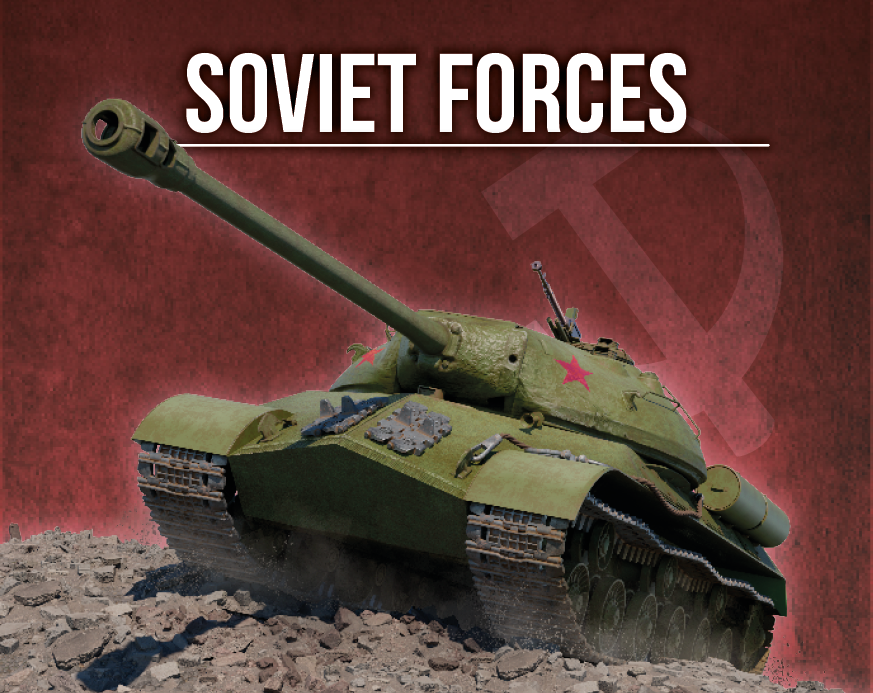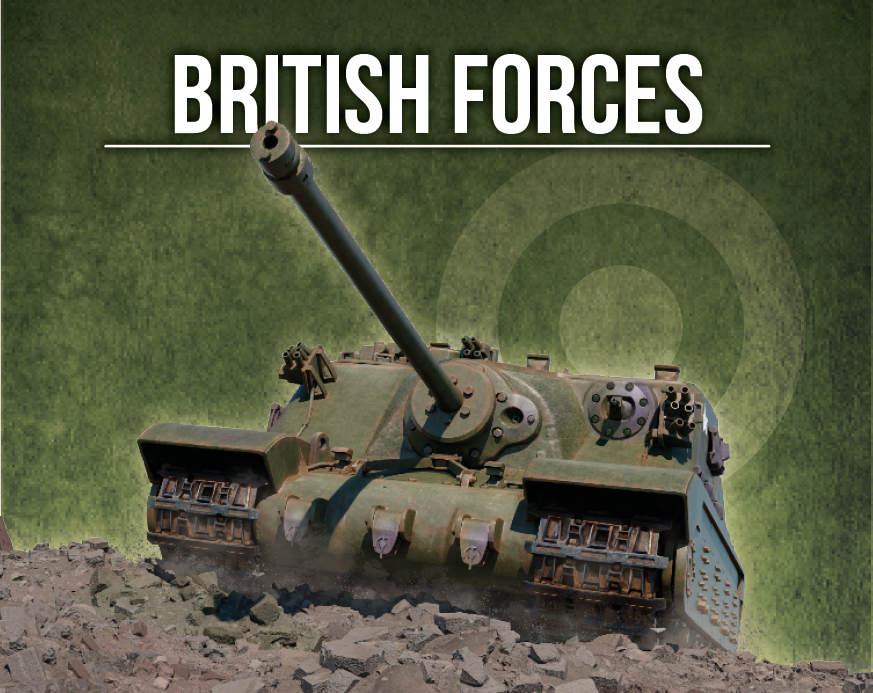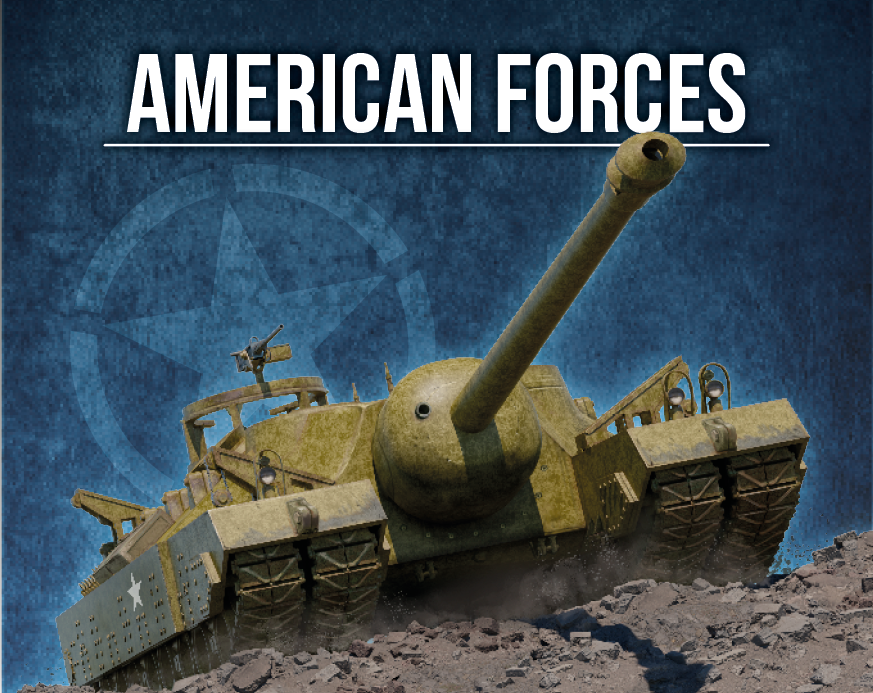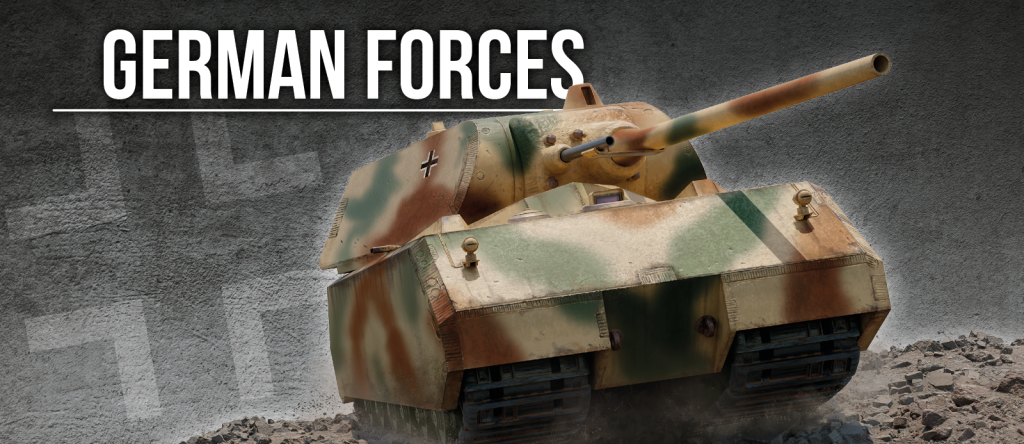
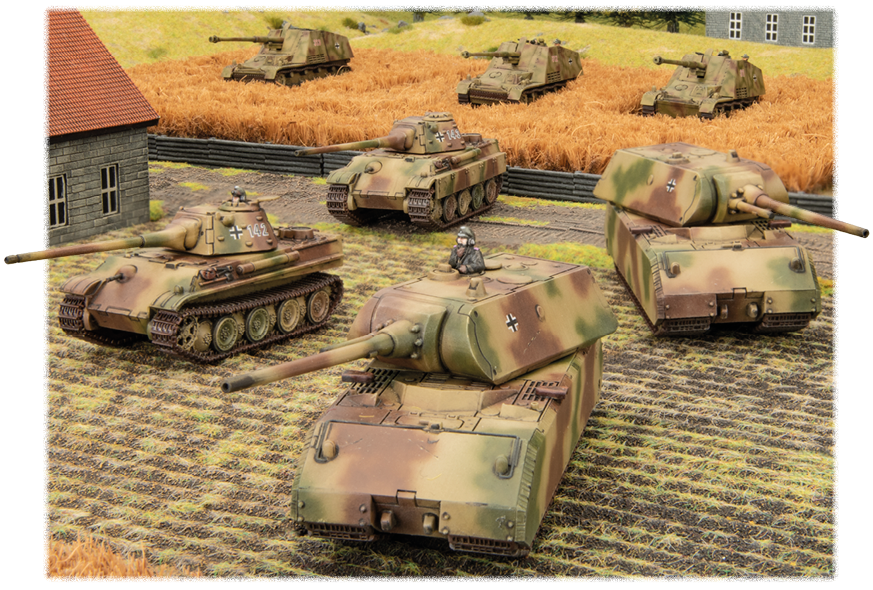
A rebuilding democratic Germany looks to form new alliances and once more become the master of its own destiny. Their military is rebuilding after the devastation of World War II, taking advantage of old and new designs left behind by the previous regime. The field tried and tested tanks such as the Tiger I, Tiger II, and Panther, as well as further developments like the Panther (8.8cm) and new designs such as the behemoth Maus super-heavy tank.

Tiger II Heavy Tank Platoon
Arriving May 2024
CSG03
Contains: 3x Tiger II Tanks
In 1944, the Tiger II promised to return the German heavy panzer to the early days of 1943 when the original Tiger I tank dominated the battlefield.
It was armed with an even longer 8.8cm gun (8.8cm KwK43) that could destroy most Allied armoured fighting vehicles at a range far outside the effective range of the enemy vehicles’ armament.
Its thick front armour made it invulnerable to most Allied guns, while its substantial side armour made it ideal for assaulting its way through fortified enemy defences.
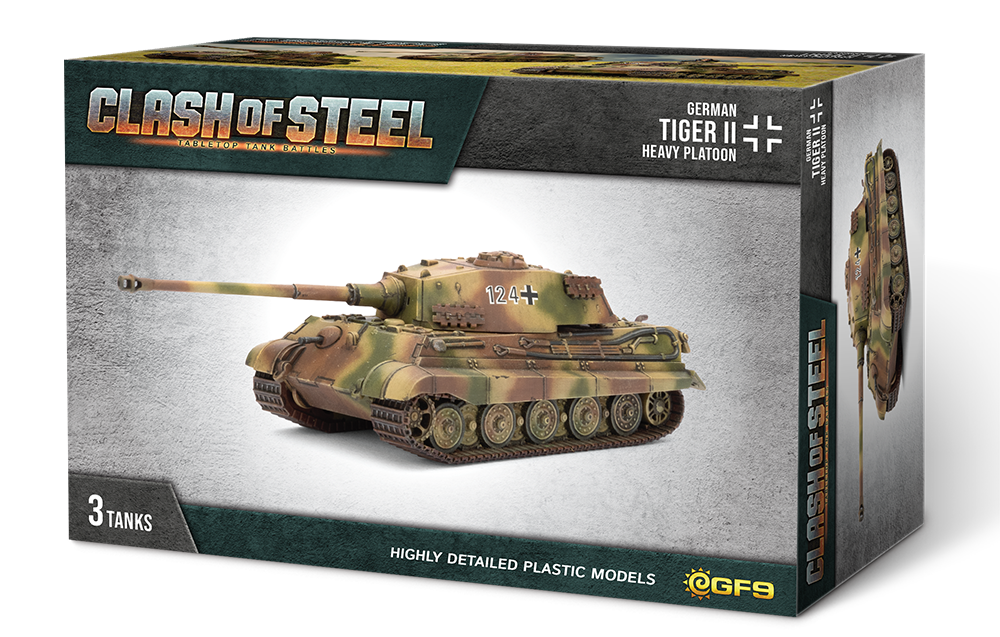


Tiger I Tank Platoon (x3 Plastic)
Arriving May 2024
CSG04
Contains: 3x Tiger I Tanks
When the Tiger was introduced in 1942 it was a weapon of un-equalled performance and protection; there was little the Allies in Tunisia or Russia could do to knock them out. It had its disadvantages (it was slow and a little unreliable to start with), but at the time its clear advantages outweighed these.
The production model Henschel Tiger I E had 100mm of front armour on both its hull and turret, 80mm on its rear and sides, and 25mm of top armour. None of the armour was particularly well sloped, but it had lots of it. Its 8.8cm gun had already proved itself in combat as a lethal anti-armour weapon. Production of the Tiger I began in July 1942 and continued through till August 1944 with over 1300 built.

Jagdtiger Tank-hunter Platoon
Arriving May 2024
CSG05
Contains: 2x Jagdtiger Tanks
The Jagdtiger was designed by Henschel, who already made the Tiger and Königstiger, or Tiger II, heavy tanks, and based it on the hull of the Tiger II. This gave the tank a solid foundation on which a lot of weight was added, with the 72-tonne tank-hunter being amongst the heaviest designs of the period.
The Jagdtiger’s thick armour was nearly invulnerable from the front with the casemate having 250mm (9.8”) of armour. The weight-saving casemate also allowed the Jagdtiger to mount the powerful 12.8cm anti-tank gun. This gun was derived from the K81 divisional gun and could penetrate any tank the Allies had, often blowing smaller vehicles into fragments.
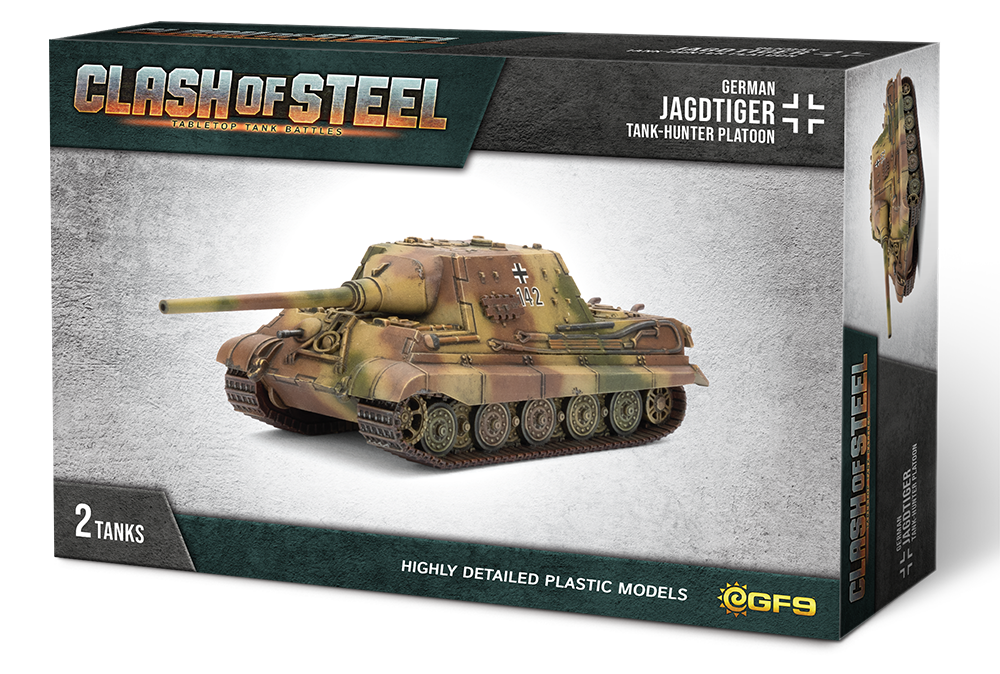

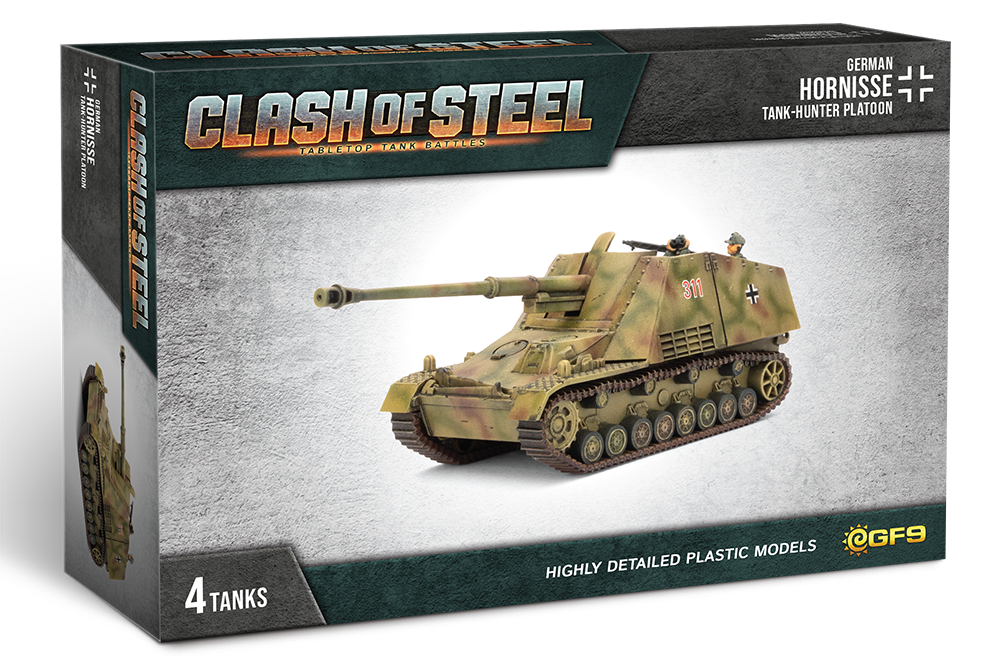
Hornisse Tank-hunter Platoon
Arriving May 2024
CSG06
Contains: 4x Hornisse Tanks
Much like the Jagdpanther, the Hornisse (German for “Hornet”) was developed in response to the growing threat of Soviet heavy tanks. It featured the same 8.8cm gun that would be used on the Jagdpanther, but mounted it on a lighter Panzer III/IV chassis which used components from both German tanks.
The Hornisse could not support the weight of both the powerful gun and heavy armour so instead had an open-topped superstructure was built around the gun. This gave the crew some protection but was not enough to stop even the lightest tank guns.

Panzer IV/70 Tank-hunter Platoon
Arriving May 2024
CSG07
Contains: 4x Panzer IV/70 Tanks
The development of the Panzer IV/70 (and its predecessor, the Sturmgeschütz III or StuG III) came from German experiences in World War I. Infantry lacked the necessary firepower to engage fixed defences effectively so an infantry support vehicle was proposed that could carry a gun that could knock out these emplacements.
The effectiveness of the StuG III on the Eastern Front led to the requirement for a new assault gun with heavier armour and firepower, capable of knocking out Allied armour as well as positions. The Panzer IV/70 achieved both goals featuring thick sloped armour plates and the long 7.5cm PaK 42 gun.
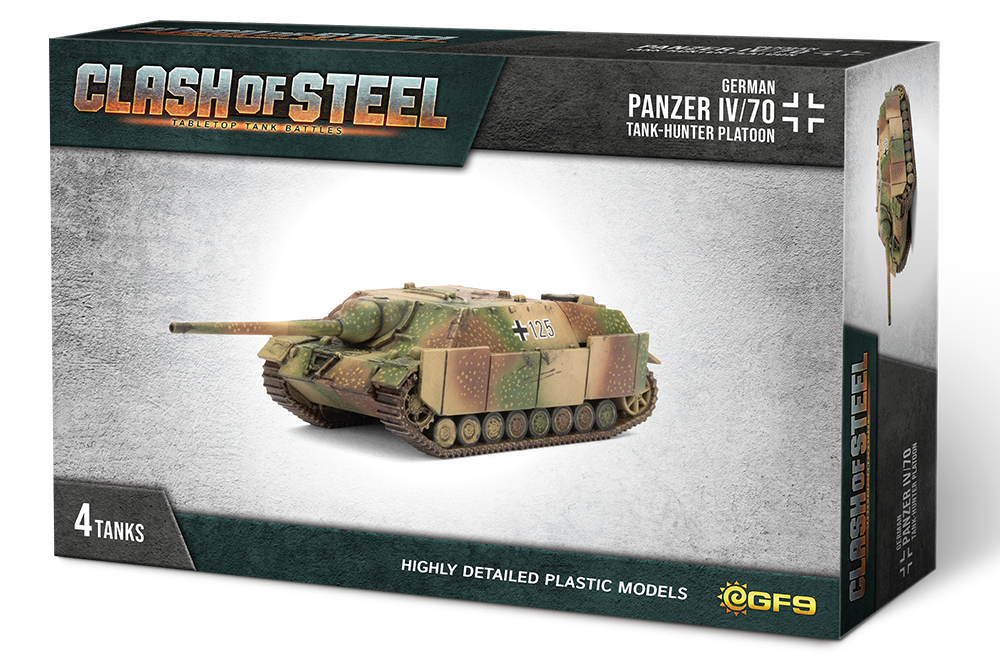

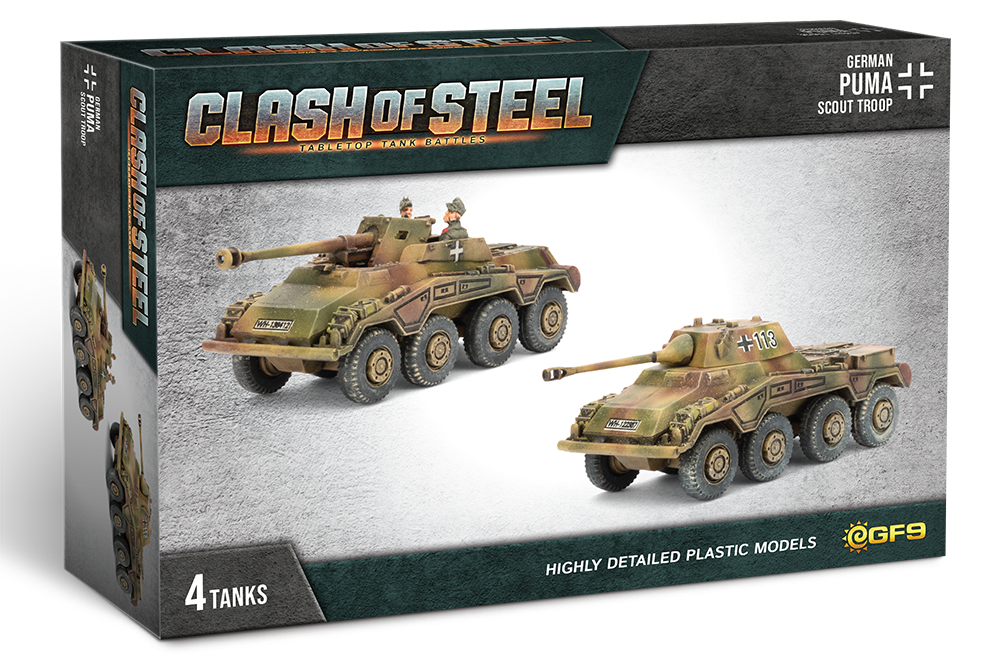
Puma Scout Troop
Arriving May 2024
CSG08
Contains: 2x Sd Kfz 234/4 & 2x Puma Tanks
The Sd Kfz 234 series of armoured cars were a lightly armed and armoured series of vehicles, designed around combat experience during the opening days of the war when fast-moving and hard-hitting reconnaissance vehicles performed well.
The Puma (Sd Kfz 234/2) is the most well known in the series and carries a 5cm KwK39 gun inside a small turret. The weapon was big enough that crews could engage enemy reconnaissance tanks and have the upper hand, but without being so powerful that they forgot their primary mission and hunted heavier prey.

Maus Heavy Platoon
Arriving June 2024
CSG01
Contains: 2x Maus Tanks
The Maus (or Mouse) was conceived as a massive “breakthrough tank” capable of pushing through enemy lines, leading supporting troops, whilst being virtually immune to enemy fire. Weighing in at 188 metric tonnes it was the heaviest fully enclosed armoured fighting vehicle ever built.
One of the most important elements in the design process was not the armour or firepower, but rather the engines and suspension required to move such a massive tank across the battlefield. The Maus could traverse terrain that other heavy vehicles like the Tiger II and Jagdtiger struggled with.
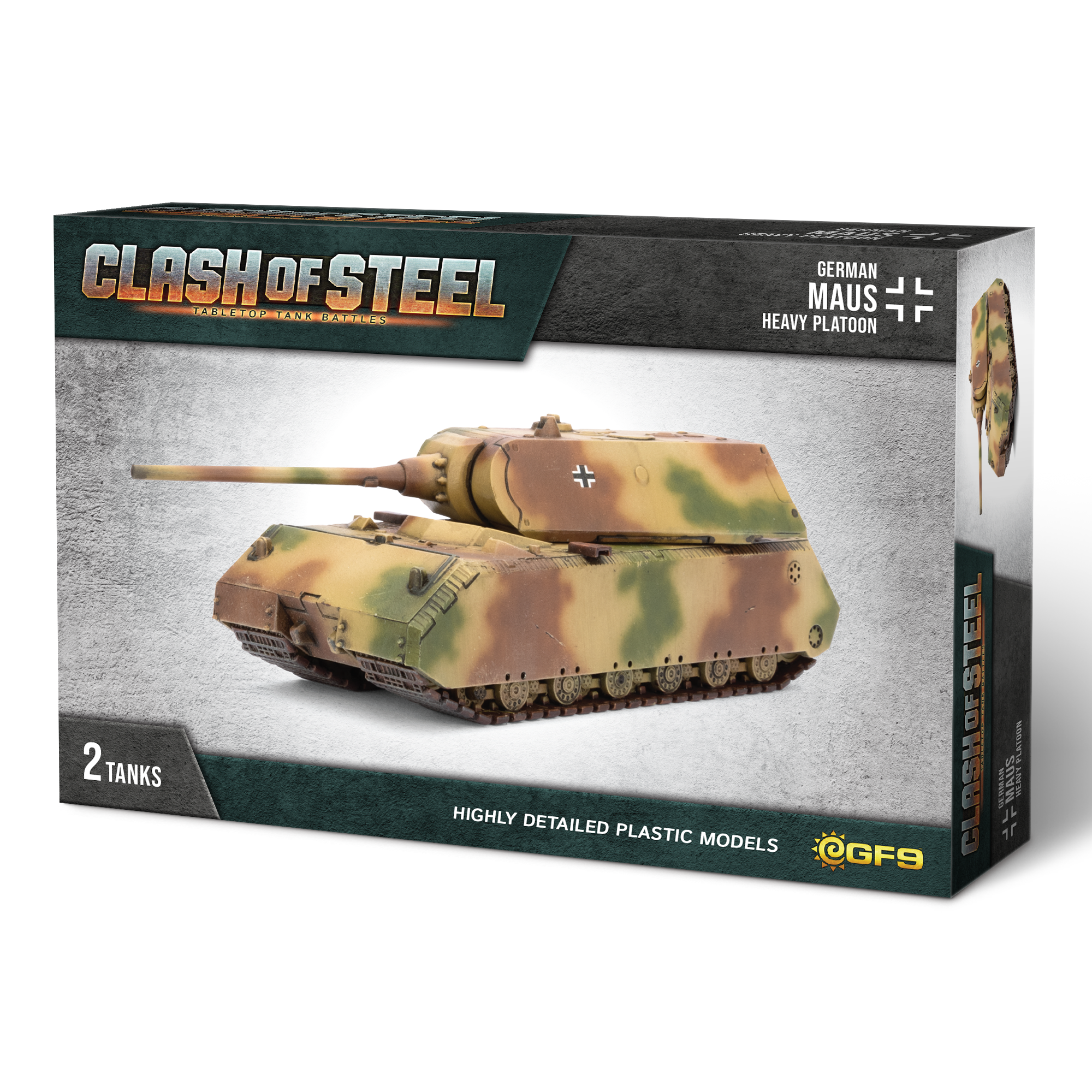

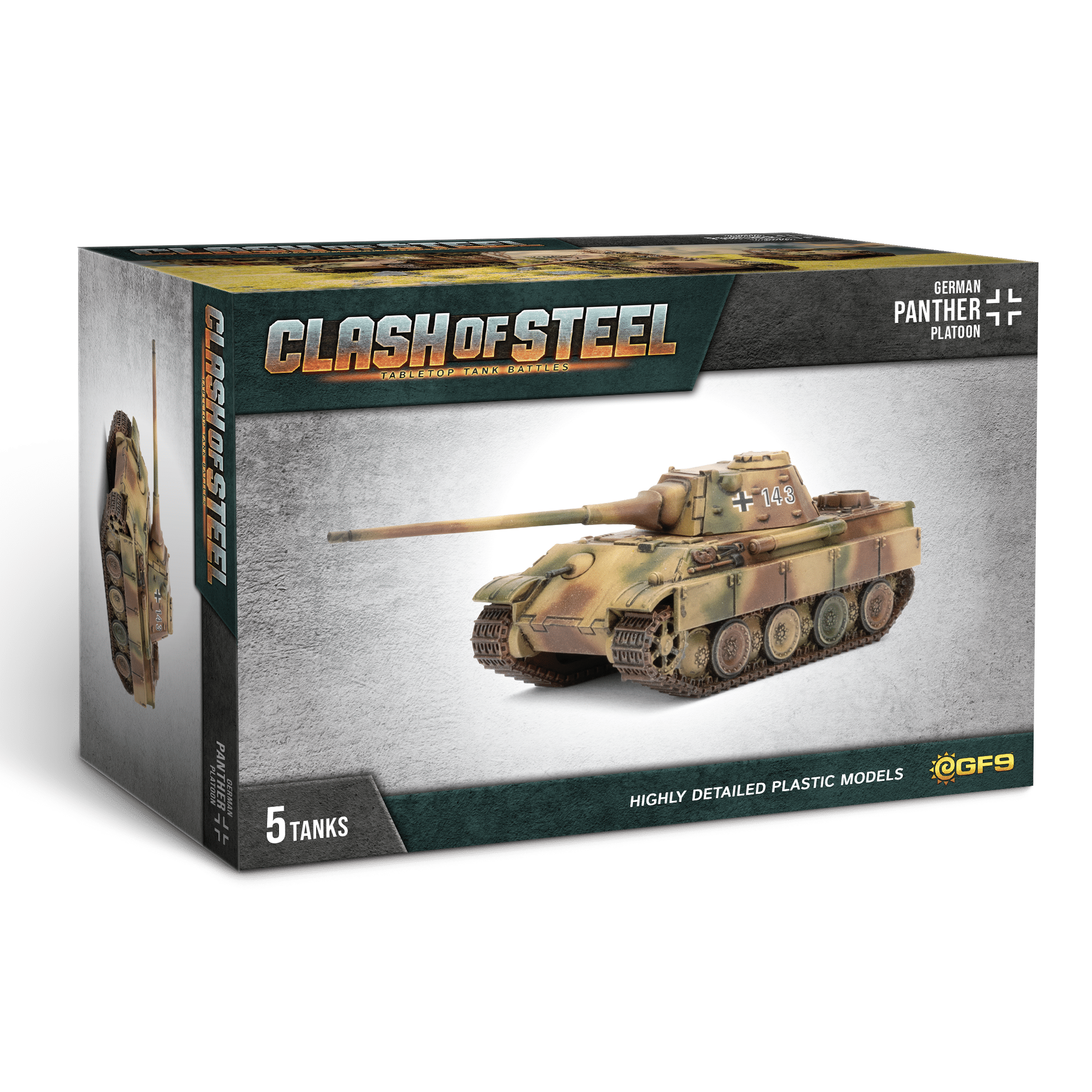
Panther Platoon
Arriving June 2024
CSG02
Contains: 5x Panther 8.8cm, or Panther 7.5cm, or Jagdpanther Tanks
The long 8.8cm gun armed Panther tank came out of two parallel design programs. One to produce a redesigned turret for the Panther and another to up-arm the Panther with a more powerful weapon.
The new turret was designed to eliminate the shot traps of the original Panther turret and improve ease of manufacture. This was called the Schmalturm or Narrow Turret due to its narrower front profile.
During the development of the Schmalturm turret it was proposed that the Panther be up-gunned to the same powerful long 8.8cm gun found in the Tiger II and Jagdpanther. Both Krupp and Daimler Benz designed modified Schmalturm turrets to fit the 8.8cm gun, eventually combining their efforts to produce a final design.



